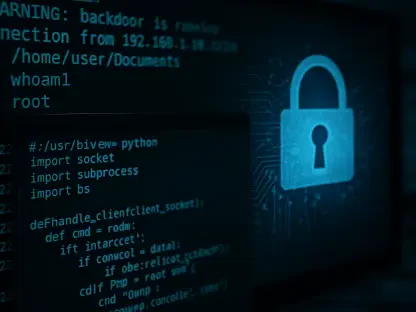In today’s digital age, data is the lifeblood of any organization. Ensuring its safety through effective backup strategies is crucial. However, many organizations still face challenges in creating resilient backup systems. This article delves into the common reasons behind backup strategy failures and provides actionable advice on building robust and resilient backup processes. By understanding the pitfalls and implementing best practices, organizations can safeguard their data and ensure business continuity even in the face of disasters.
The Pitfall of Viewing Backup as a One-Time Project
One of the most significant mistakes organizations make is treating backup strategies as one-time projects rather than ongoing commitments. Initially, backup plans receive considerable attention, but as IT environments evolve, these plans often become outdated. New data sources, altered workflows, and software upgrades can quickly outpace static backup strategies, leaving organizations vulnerable. To avoid this pitfall, it’s essential to integrate backup strategies into larger business continuity programs. Regularly reviewing and updating backup plans ensures they remain aligned with the current IT landscape.
This proactive approach helps organizations stay ahead of potential risks and maintain data integrity. Unfortunately, if backup strategies are not continuously revised, they can become a weak link in the organization’s security chain. As new challenges and threats emerge, outdated backup systems may not be capable of adequately protecting critical data, leading to potential data loss or breaches. Businesses must view backup strategies as living documents that require regular audits and updates. This ensures that the strategies evolve in conjunction with technological advancements and the organization’s changing needs.
The Risk of Relying on a Single Storage Location
Another critical error is depending on a single storage location for backups. A disaster affecting the primary data center can result in the loss of both production and backup data. To mitigate this risk, organizations should adhere to the 3-2-1 rule: keep three copies of data on two different media types, with at least one copy stored off-site. Additionally, incorporating offline or air-gapped backups can provide an extra layer of protection. These backups are disconnected from the network, making them immune to cyberattacks and other threats that could compromise online data.
By diversifying storage locations and methods, organizations can significantly reduce the risk of catastrophic data loss. The importance of this approach cannot be overstated, especially in light of increasing cyber threats. Ransomware attacks, for example, have become more sophisticated and can target backups stored in the same network. Offline or air-gapped backups act as a last line of defense, ensuring that at least one copy of the data is safe from such attacks. Implementing this multi-faceted backup strategy requires careful planning and resources but ultimately provides peace of mind and a higher level of data security.
The Importance of Proper Documentation and Training
Proper documentation and training are often overlooked aspects of backup strategies. If only a few staff members understand the backup processes, inconsistency and the potential for failures increase, especially if those key individuals are unavailable. Comprehensive documentation ensures that all team members are aware of the procedures and can execute them correctly. Regular training sessions help keep staff updated on the latest backup protocols and technologies. This knowledge transfer is crucial for maintaining consistency and reducing the risk of human error.
By investing in documentation and training, organizations can build a more resilient backup system. Furthermore, a well-documented backup strategy allows for smoother transitions during staff changes or absences. New team members can quickly get up to speed on the processes without a steep learning curve. Training sessions should be conducted periodically to reinforce best practices and introduce any new procedures or technologies. This ongoing education fosters a culture of preparedness and ensures that everyone is capable of responding effectively in the event of a disaster. Ensuring that all employees understand their roles in the backup process helps maintain data integrity and reduces the likelihood of costly errors.
Integrating Backup into the Organizational Security Plan
Incorporating backup, disaster recovery, and business continuity into the broader organizational security plan is vital. Regular testing of backups is critical to ensuring their dependability. Many companies only discover backup failures when trying to restore data during emergencies. Periodic test restores validate backup success and reliability. Automated backup verification serves as an additional safeguard against corrupt or incomplete backups. Monitoring and reporting capabilities in modern backup tools provide alerts and dashboards for backup issues such as low storage capacity. Proactivity in monitoring these metrics allows for timely problem resolution before they become critical.
A comprehensive security strategy that includes regular backup testing and monitoring can prevent the unpleasant surprise of a failed restoration when it is most needed. Too often, organizations neglect to verify their backups, assuming they are reliable without concrete proof. Scheduled test restores can identify issues before they escalate into crises, providing the opportunity to rectify problems in a controlled manner. Moreover, advanced monitoring tools not only alert administrators about potential backup issues but also offer insights into trends and areas for improvement. This proactive stance on backup verification establishes a strong foundation for data security and reliability.
Consistency in Backup Procedures
Consistency in backup procedures is another area of focus. Diverse backup methods across departments elevate the risk of errors and confusion. Centralizing schedules, encryption settings, and retention rules under a unified, policy-based system minimizes human error and streamlines operations. Balancing recovery time objectives (RTO) and recovery point objectives (RPO) with a business’s operational needs requires careful analysis. Conducting a thorough business impact analysis helps identify mission-critical processes, applications, and data sets, and determines acceptable downtime or data loss levels.
This analysis aids in prioritizing which data needs tighter RTO and RPO targets, acknowledging the cost and complexity this brings. Technologies such as incremental backups, continuous data protection, and cross-site replication are recommended to meet these targets without overextending resources. When backup procedures are standardized and aligned with business objectives, organizations benefit from reduced complexity and improved coordination. This systematic approach ensures that every department adheres to the same high standards, reducing inconsistencies that could jeopardize data recovery efforts.
Determining Data Backup Granularity
Determining which data to back up and at what level of granularity involves considering regulatory or compliance requirements. Reviewing such rules helps identify mandated data retention guidelines. Operational value also dictates backup frequency. Critical operational data might need near-real-time replication or frequent backups, whereas less dynamic data can have less frequent backup intervals. Policy-based automation can streamline these decisions, ensuring that backup processes are consistent and compliant with regulatory standards. By automating backup schedules and retention policies, organizations can reduce the risk of human error and ensure that all critical data is adequately protected.
Automating these processes simplifies management and provides assurance that backups are conducted as required without direct intervention. Regulatory and compliance requirements add an additional layer of complexity to backup strategies. By thoroughly understanding these mandates, organizations can avoid costly fines and protect themselves from legal repercussions. Automation tools ensure that retention policies are consistently applied, freeing up human resources to focus on more strategic tasks. This level of granularity in data backups ensures that critical information is always available when needed, while non-critical data is still protected but does not consume excessive resources.
Key Advice for Improving Backup and Recovery Processes
In today’s digital era, data is the essential asset for any organization. Protecting this data is paramount, and effective backup strategies play a key role in ensuring its security. Yet, many organizations struggle with creating dependable backup systems. This article explores why backup strategies often fail and offers practical advice on establishing strong and reliable backup processes. By identifying common pitfalls and adopting best practices, organizations can protect their data and maintain business operations even when disasters strike. Understanding the complexities of data backup is crucial for any organization aiming to prevent data loss and ensure continuity in the digital age. Addressing these challenges head-on not only helps in safeguarding valuable information but also supports long-term stability and resilience in the face of unforeseen disruptions. Through comprehensive planning and diligent execution, businesses can create a robust data protection framework that adapts to evolving threats and ensures sustained operational integrity.









